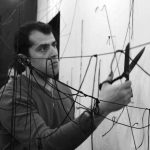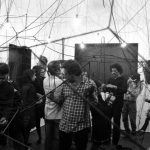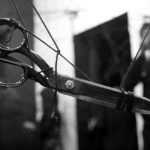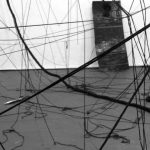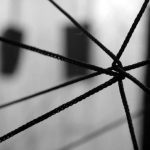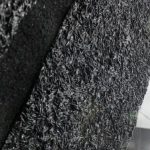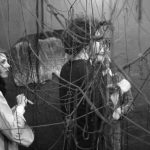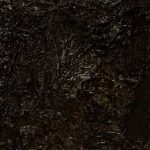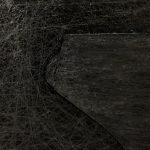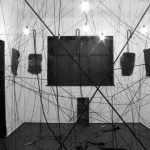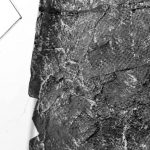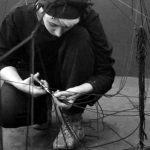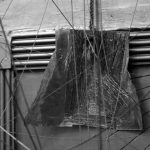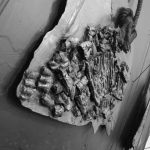My first solo exhibition was held at the Design House of Farhad Gavzan, a design professor. Farhad Gavzan taught students to focus on the pure design and from this aspect it was a great help for my serious and professional entry into the world of art and at the same time into the field of conceptual art.
At first, without having any knowledge about the field of conceptual art, I thought I was designing, but as time went on, I saw that drawing on papers could not convey my meaning well, as if my hands were tied. Then I started using some of the handy tools and objects that I either saw or dealt with in my daily life and brought them to my field of design, and this was the spark that led me to the field of conceptual art and I’m still working on it until today.
Thirty works were displayed in this exhibition, the predominant color of which was all black; Whether with a drawing pencil or with building paint. The reason for choosing the color goes back to the period in which these designs were formed. The period when it was as if more blackness was seen and the sound of sighs was heard more. So I made up my mind.
The material used, as I mentioned earlier, were handy tools; from dirt, bread, rice, wood, glass, carpet and cardboard to steel wool, Kleenex tissues and toothpaste. The audience faced a deep darkness from the entrance part of the exhibition. There was a black curtain which meant to show that behind this black curtain and in front of the audience’s eyes is nothing but black. If the audience chose to enter the exhibition space, he had to go down the stairs to the main part of the exhibition. But before the main part, the audience was faced with a small pool of black water and had to choose either to cross the black water with a big step or to come into the water and get in the dark space of the exhibition with his feet soaked in black water and dirt. Then, the audience faces a video, a relatively long video, and he should see if he is patient enough to watch it or wants to enter the main room. But how?
To see the thirty works, the audience entered a room relatively small and filled with nested black strings, like the nested lines of my designs; hard and rough. Some of the strings were thin and some were thick and you needed to cut them so you can pass through. How could you get rid of these black bands? Is cutting the best option? To find this answer, some tools such as scissors and a knife were provided on the floor so the audience could use it. But was it the end of this way?
During this exhibition, another performer and I who we both existed in that video, dressed the same as the video and came to the room full of the strings and tied the strings again as soon as they were cut and this process was repeated till all the strings were cut and it was impossible to tie them again. This was what I wanted to be formed in the mind of my audience as a question. Do you think after the release of one string, there would be no more string? What to do in the midst of all these blackness?!
There were audiences who could not enter the main room due to the obstacles and were not willing to get involved and preferred to watch from the distance.
Razieh Aarabi
